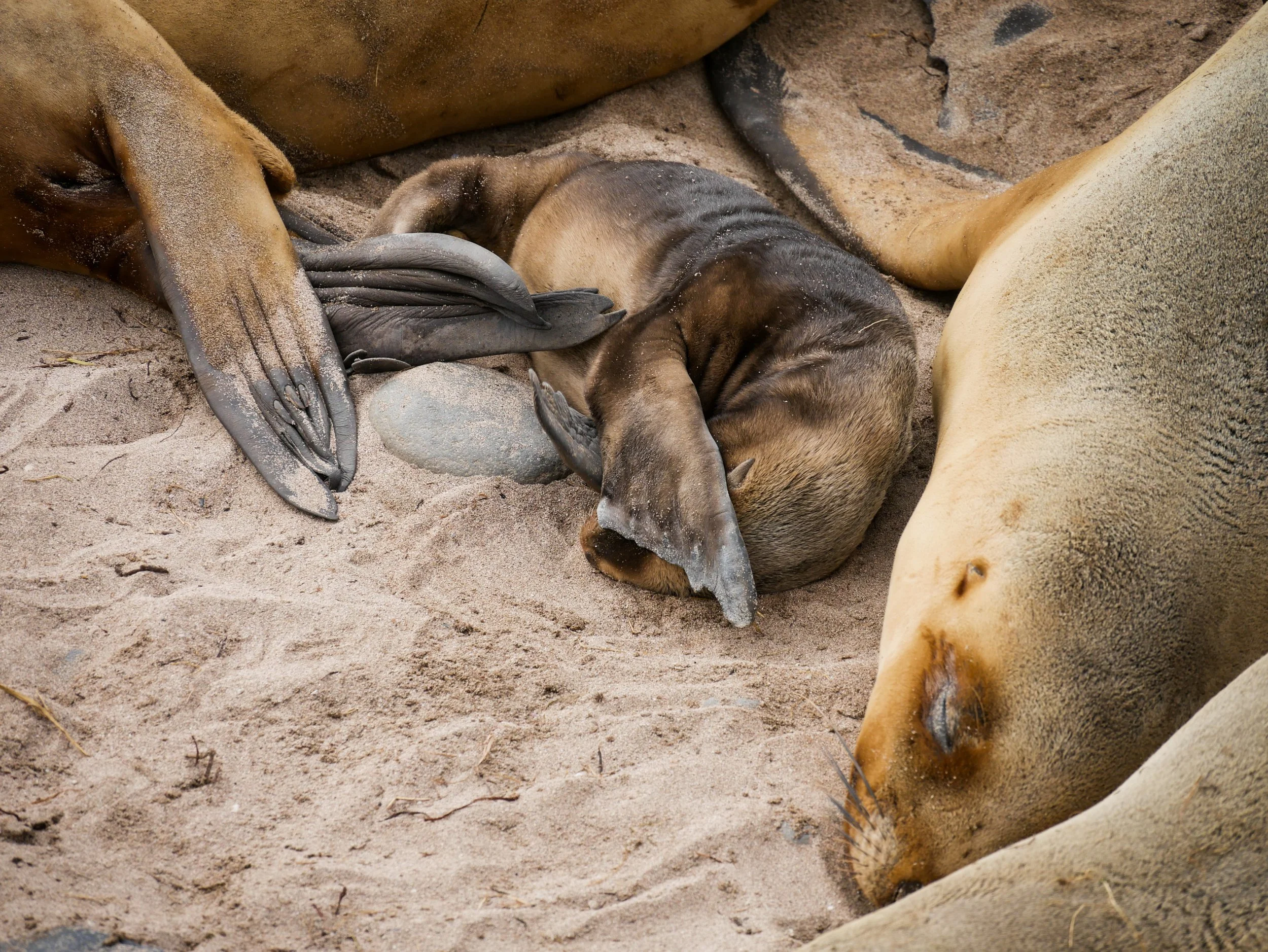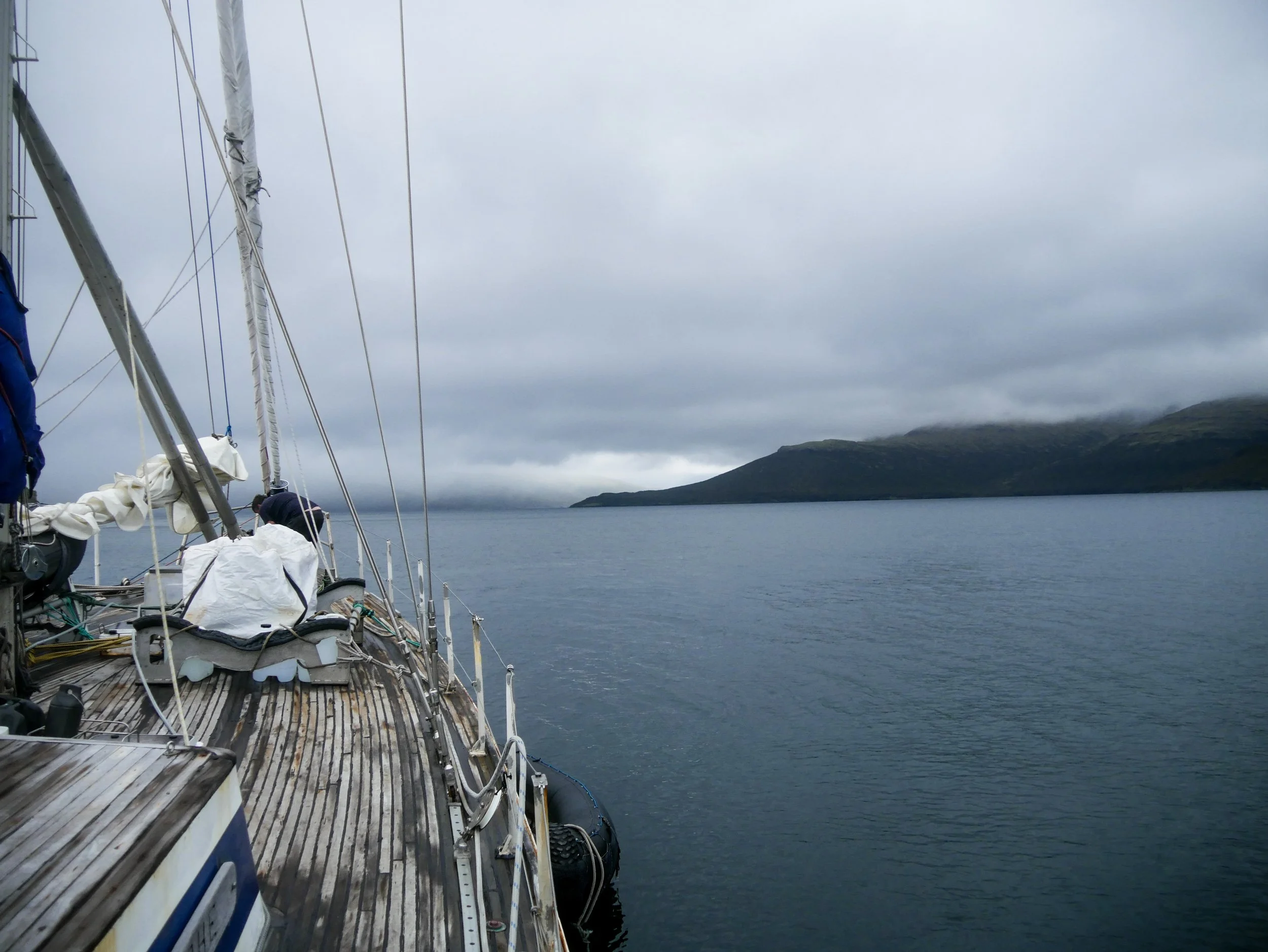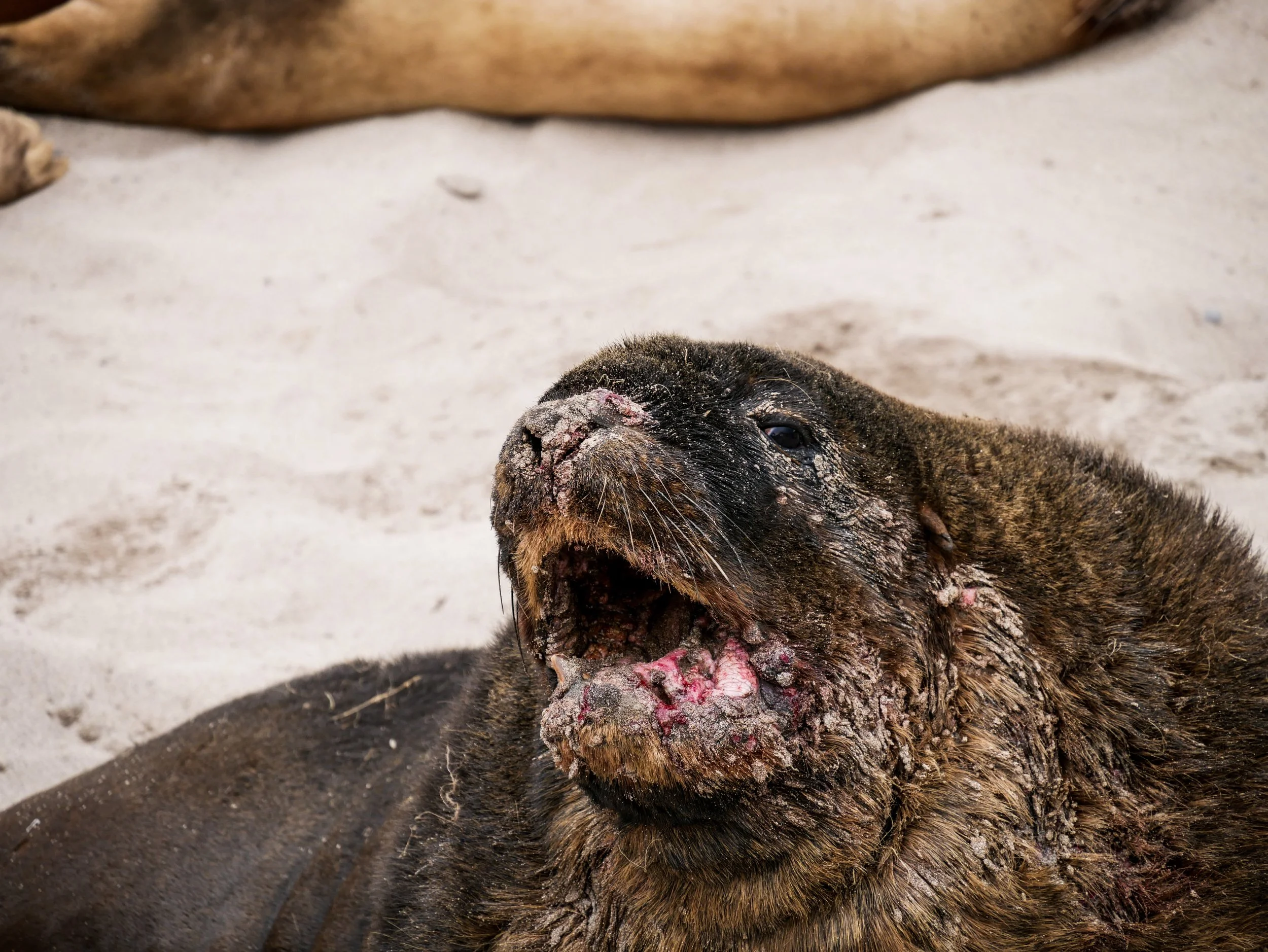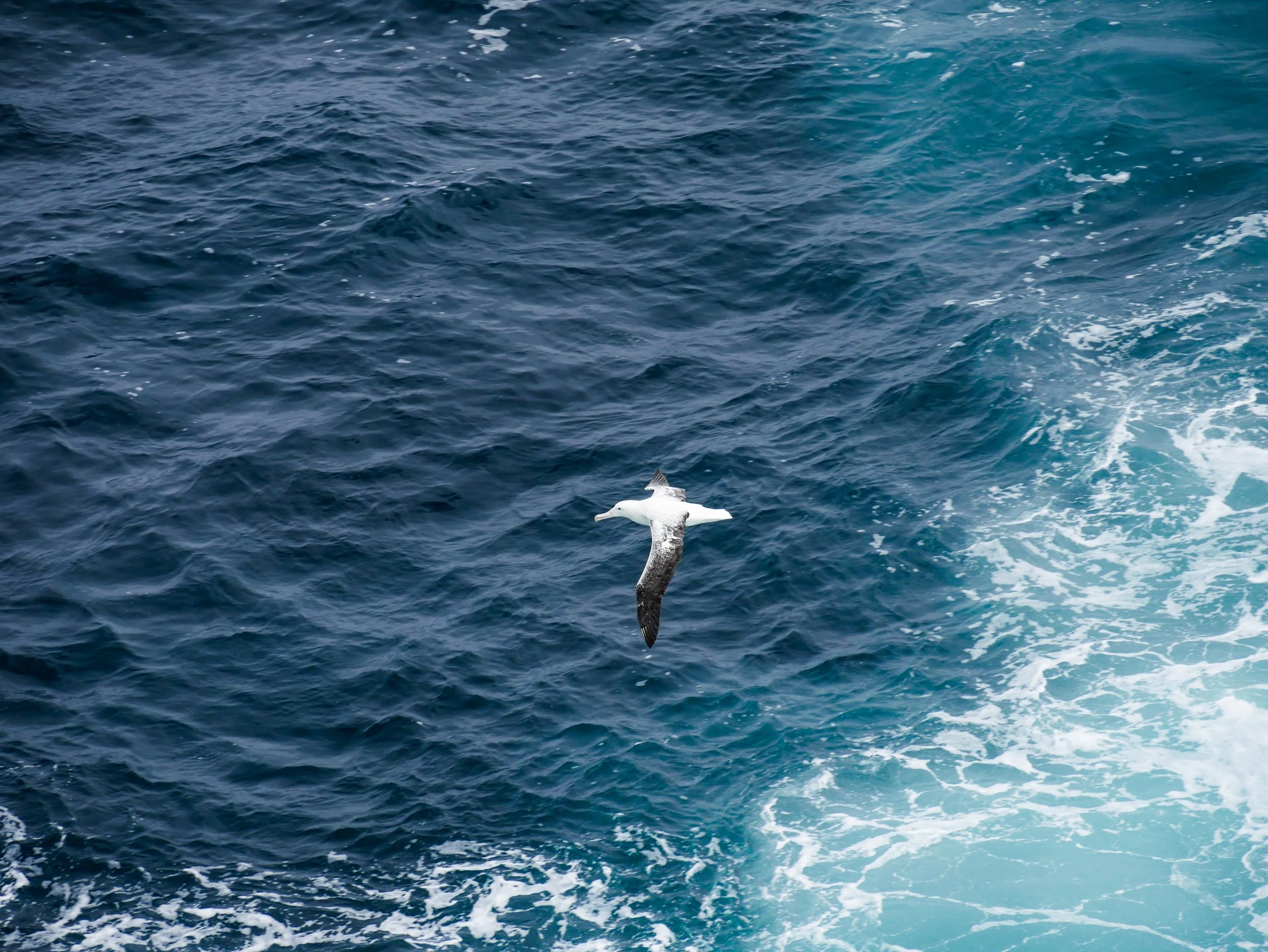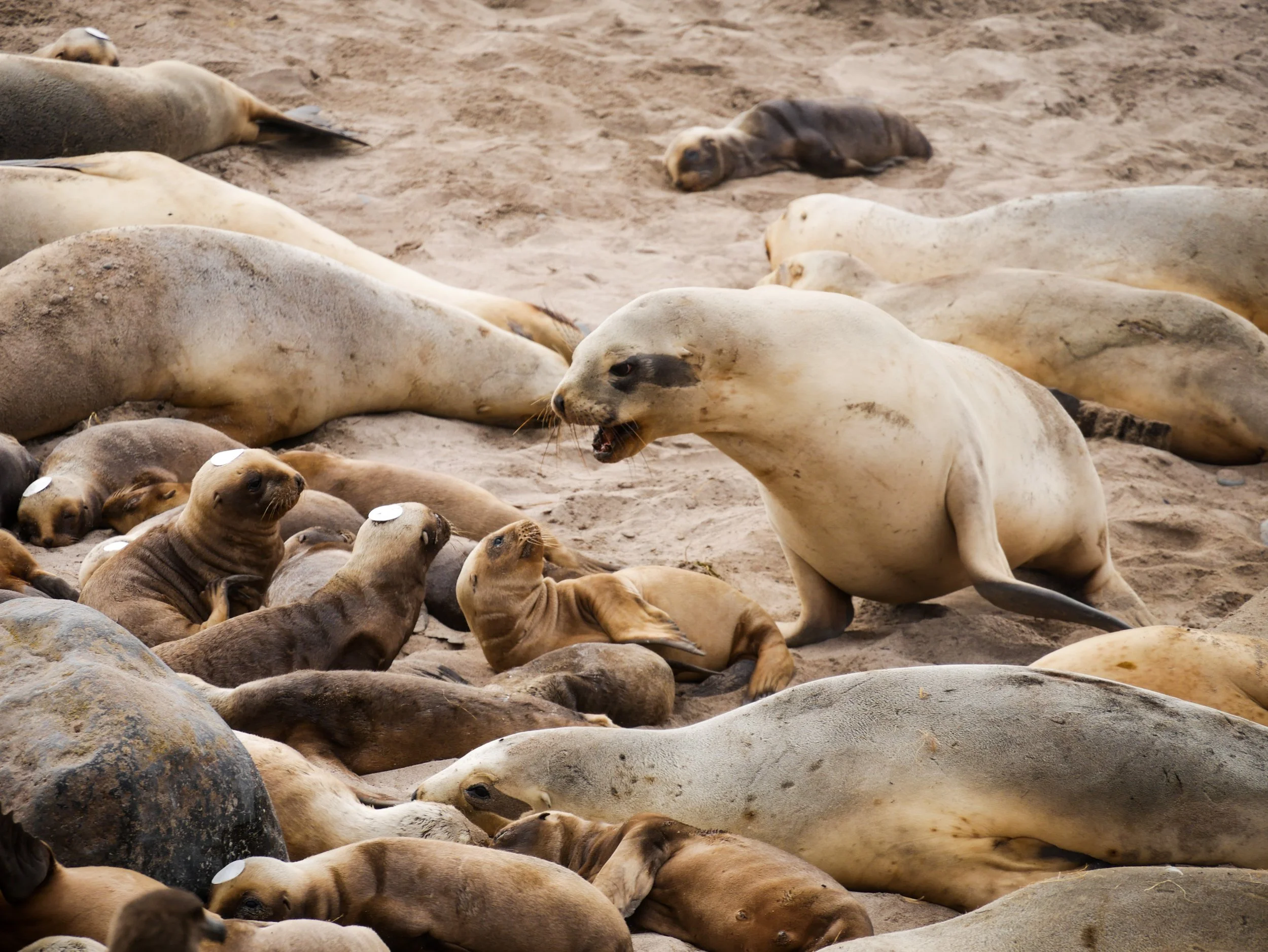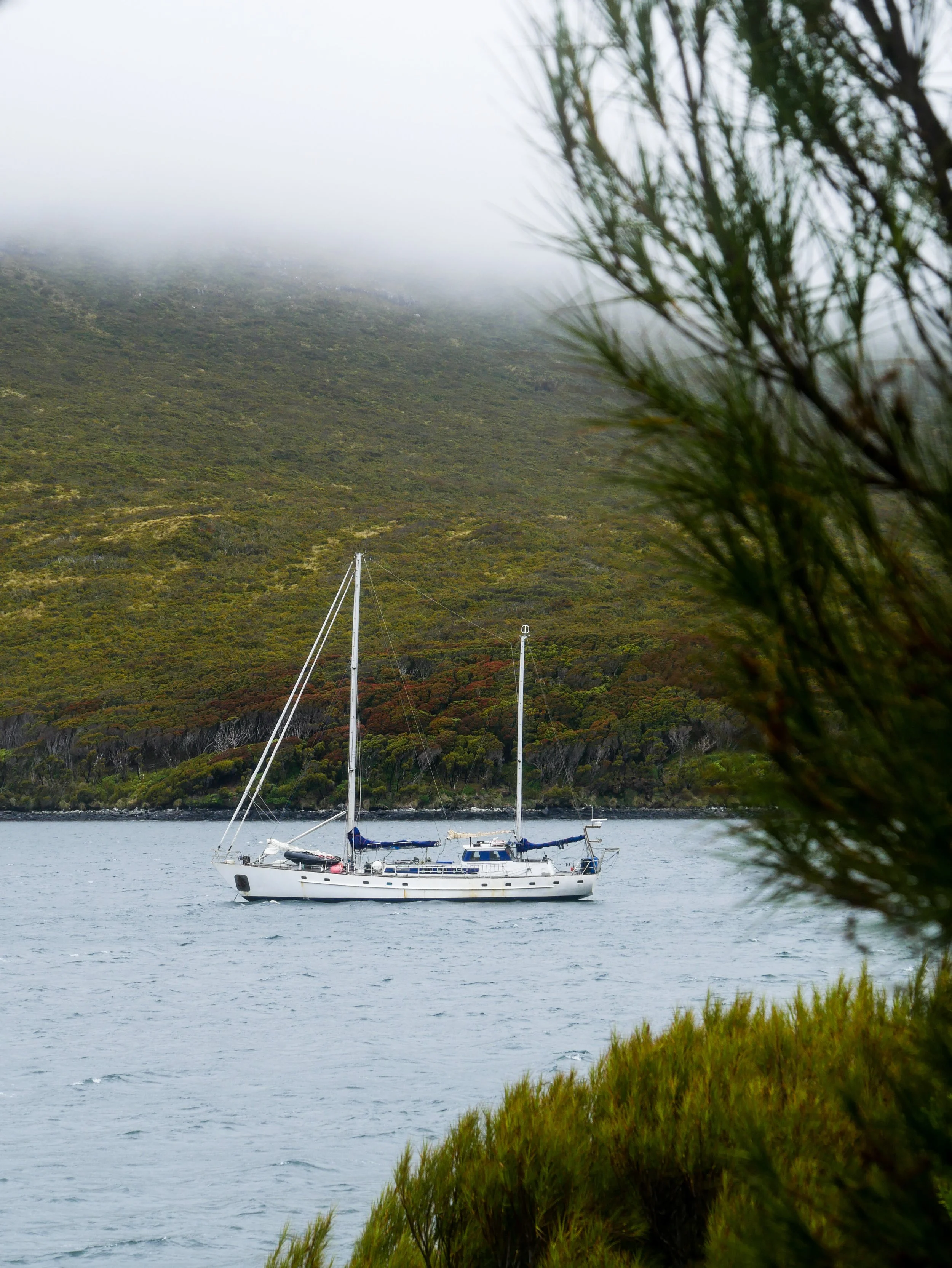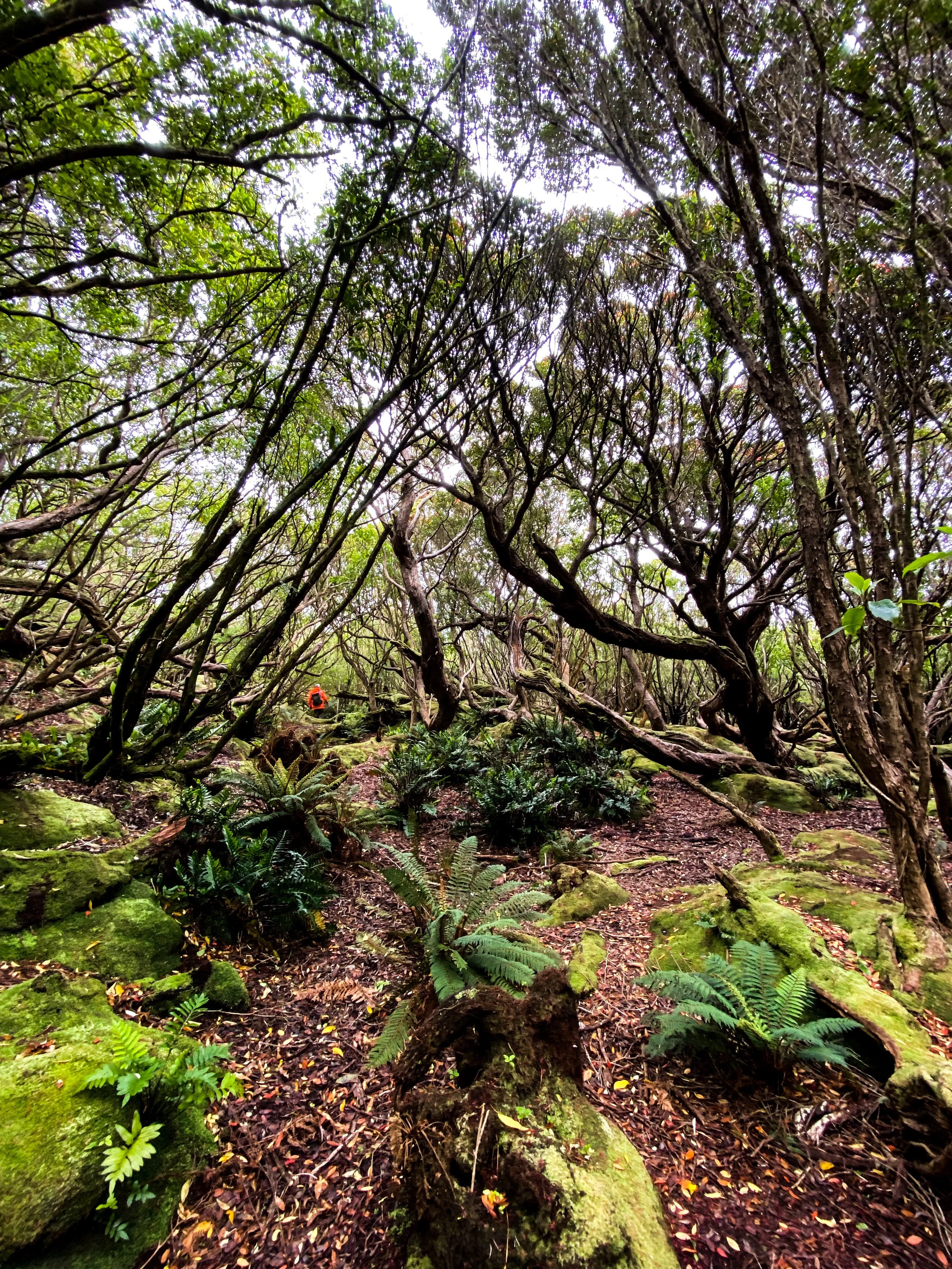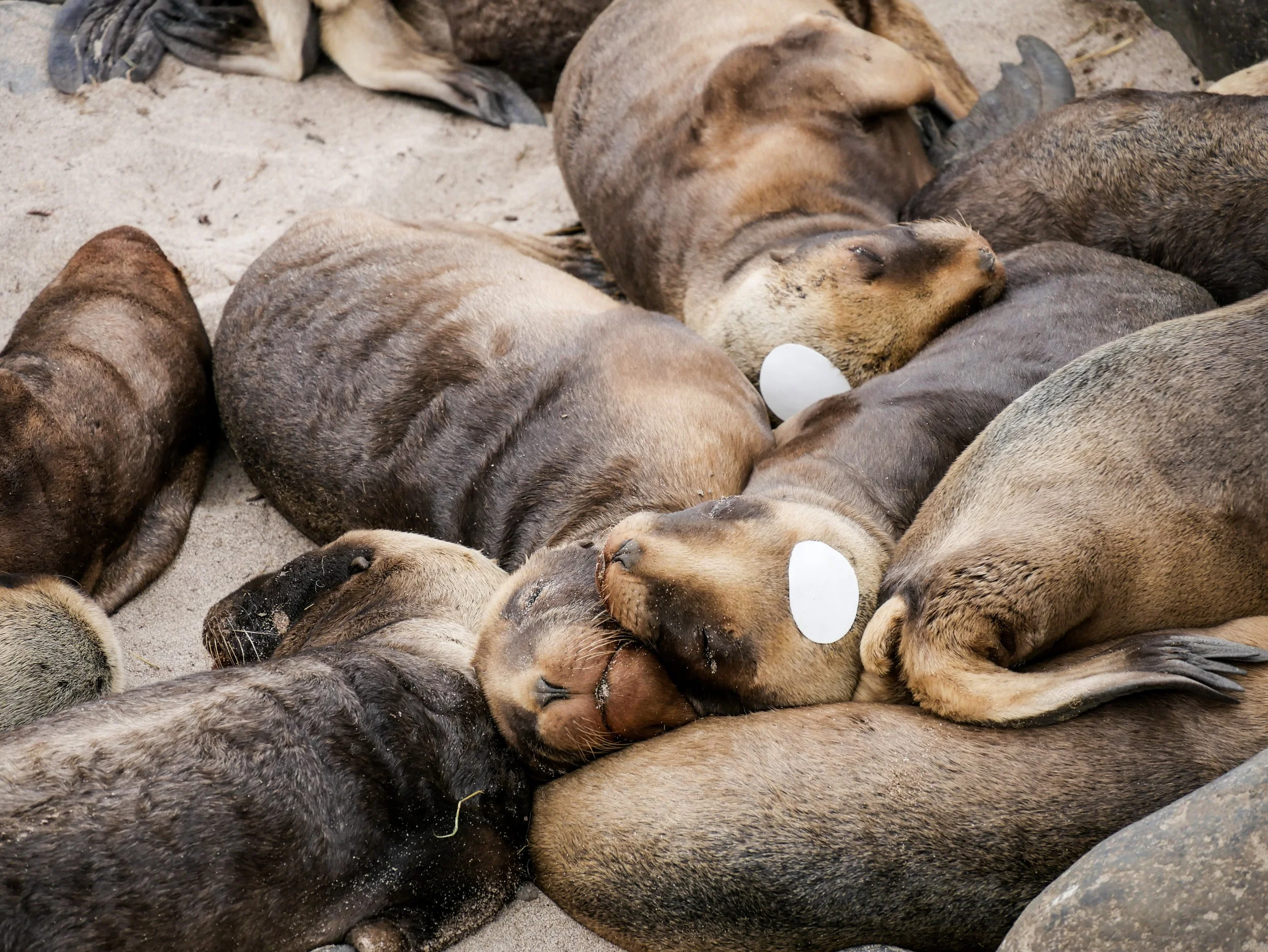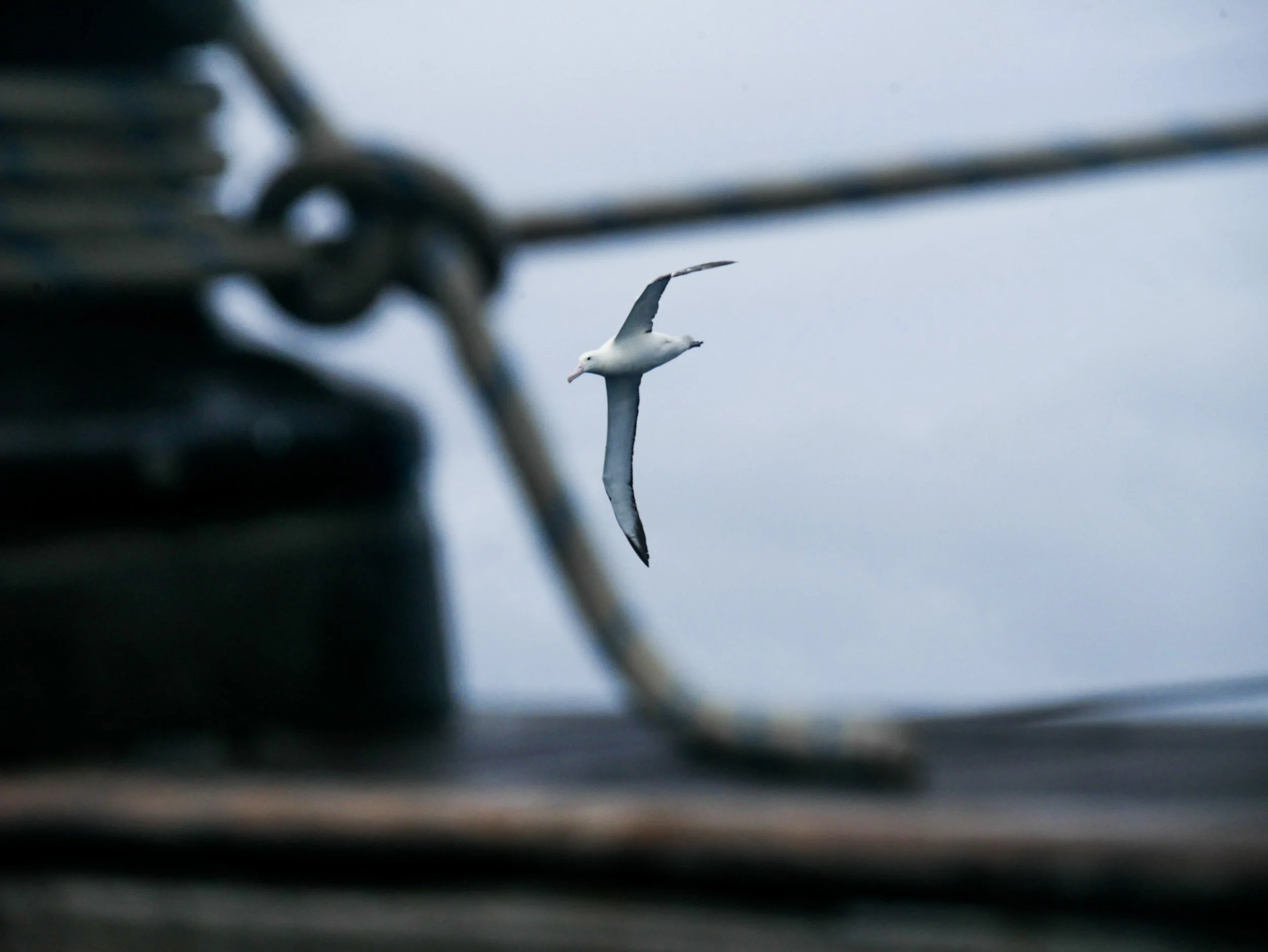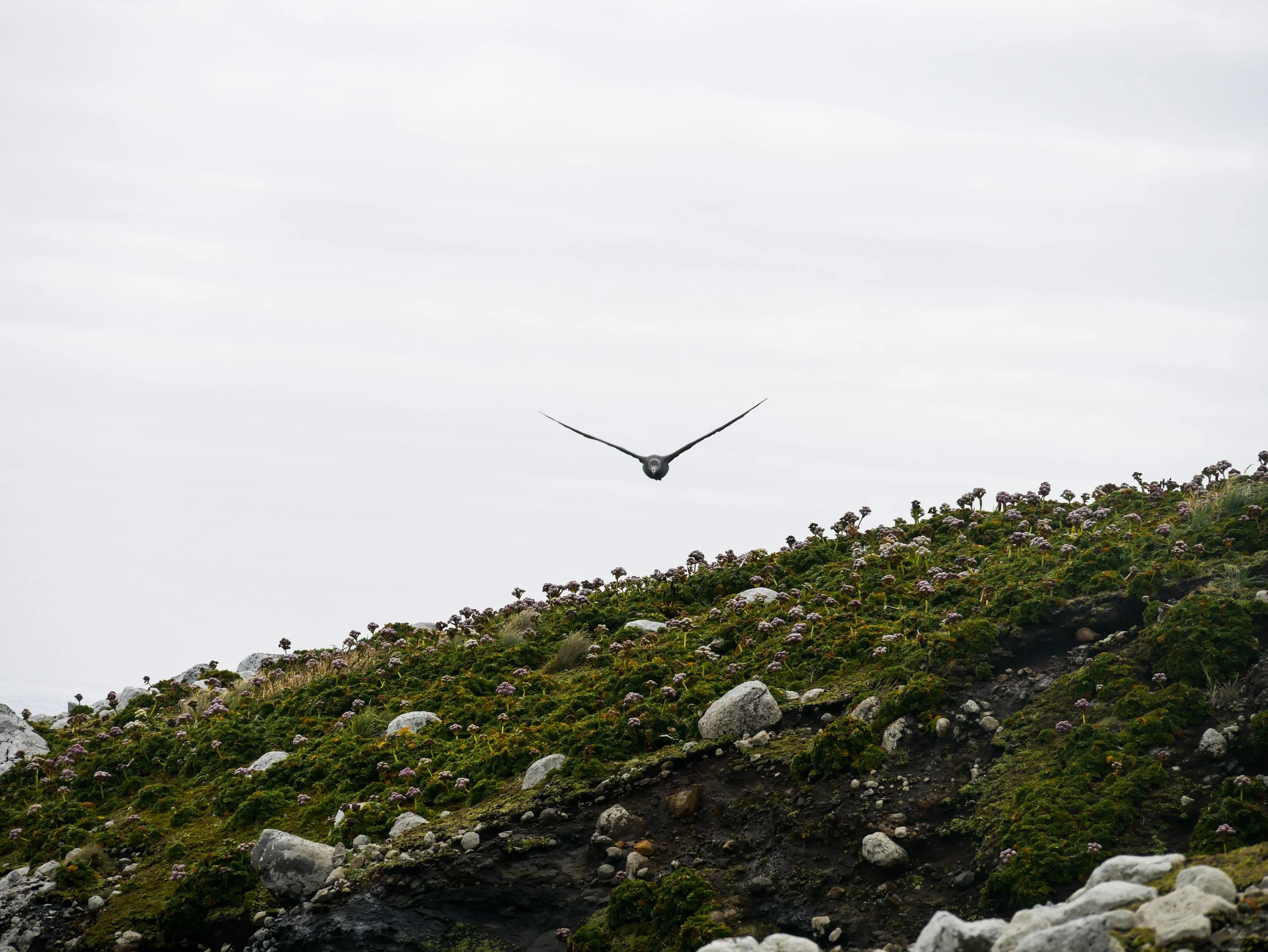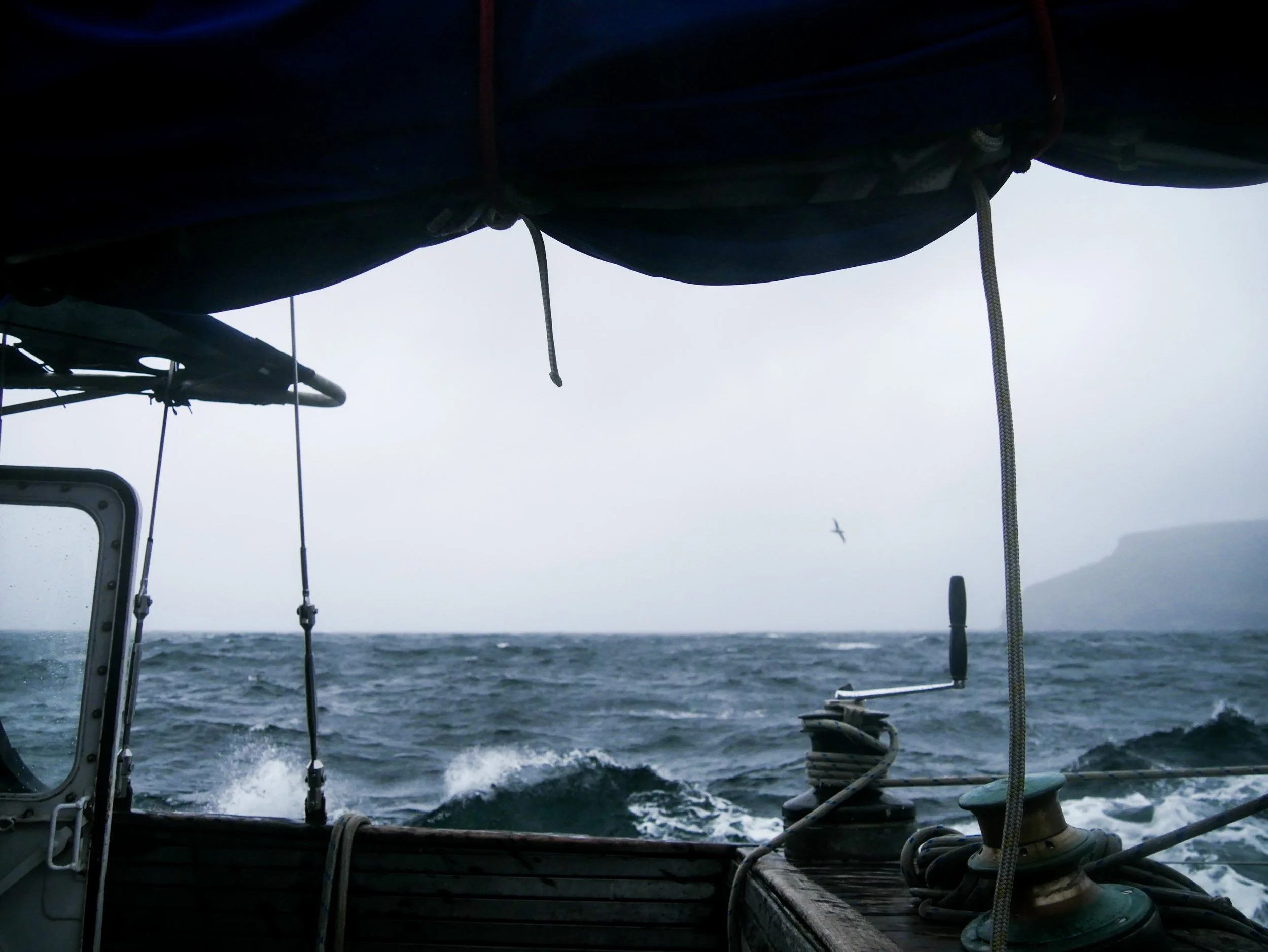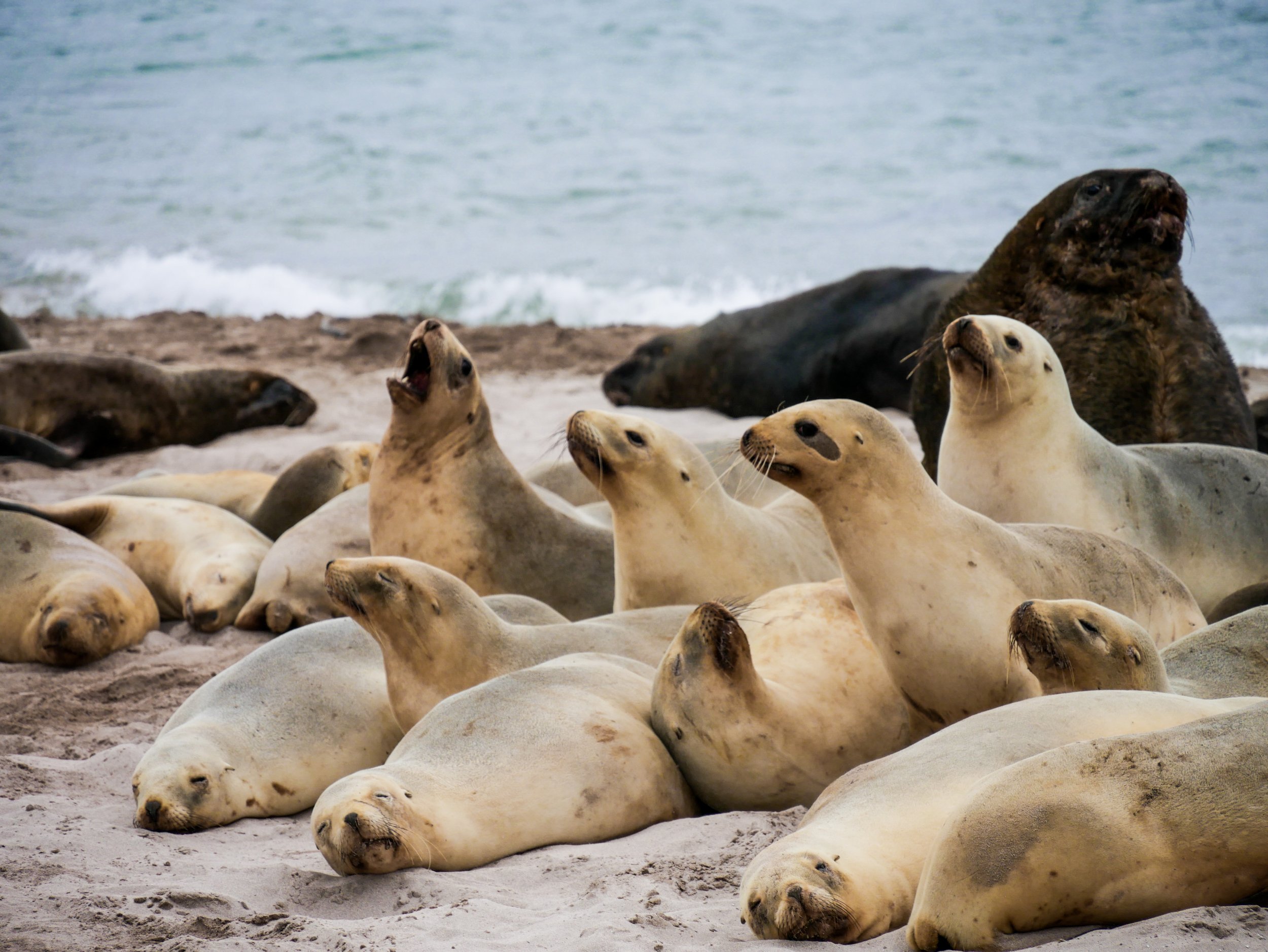
SEA LION MORTALITY IN THE SUB-ANTARCTICS
The ability to perceive order within apparent chaos is the great power of science. There is something incredibly satisfying about turning a seamless picture into a jigsaw puzzle and by seeing and understanding how each piece fits, standing back again and gaining a much deeper appreciation of the magnificent beauty of the unified whole.
I went into my vet degree with one goal: to become an equine vet. Somewhere along the way I was struck by a wave of open mindedness and found a love ten times stronger. It’s been a process of grit and determination. I’ve been forced to grow some thick skin to deflect people placing me in the basket of unrealistic dreamers. But it’s been easy because quite simply, the wild gets me up in the morning. So when given the opening to become part of a team investigating mortality in New Zealand sea lion pups down in the Sub-Antarctics I jumped at the opportunity. These islands are afforded the highest form of protection from the New Zealand Government and are the epitome of Papatūanuku raising a middle finger to humanity and the destruction that we bring. Only accessible by boat, they are home to some of the rarest populations of seabirds and marine mammals in the world - yet like everywhere else numbers are declining. So many questions surround New Zealand sea lions in this region… Answers of which, will hopefully point us in the direction of some management changes that will make survival less of an effort for the next generation of pups and thus prevent the grim fate of becoming a skua’s lunch.
Approximately 68% of the total population of New Zealand sea lions breed on the Auckland Islands in New Zealand’s subantarctic. There are estimated to be approximately 12,000 NZ sea lions and approximately 2,000 breeding females in the population, and Fisheries New Zealand reports occasional incidental captures of adult females in the Squid 6T fishery near the Auckland Islands during the annual breeding season.
Campbell Island (Motu Ihupuku) is home to the second largest breeding population of New Zealand sea lions. The two known NZSL breeding colonies on Campbell Island are situated at Shoal Point and Davis Point on either side of Perseverance Harbour. This population, despite apparent growth in pup numbers, typically experiences high levels of pup mortality (e.g. 40-60%).
Early season (up until mid January) pup mortality at Campbell Island is often very high, and preliminary data suggest that the main causes of this early mortality are misadventure and starvation/exposure. The number of thin pups found dead early in the season can be extremely high in some years, and preliminary associations suggest that exposure is an important factor.
Infectious disease causes a proportion of pup deaths, but at present we don’t know either the magnitude of this or which pathogens are the most important. We do know, however, that the ‘sticky’ strain of K. pneumoniae that causes a large proportion of pup deaths on Enderby Island is present on Campbell Island, but we don’t know whether it causes pup mortality.
At fifty degrees south the world seems freshly created and completely undiscovered. Absorbing the waves, the boat heaves and subsides as though breathing. Albatross pass by without so much as a glance whilst cape petrels stick around for a while reminding you that the Southern Ocean is an open road in any direction for those less domesticated.
Known common causes of New Zealand sea lion pup mortality:
Infection. Infectious agents (pathogens) that have been identified as causing or contributing to pup mortality include bacteria such as hypervirulent (HV) Klebsiella pneumoniae and Streptococcus species, and intestinal parasites (hookworm). As yet unidentified viruses may also play a role in sickness and mortality. Because management interventions are possible for some of these pathogens, it is important to get a better understanding of the proportion of deaths occurring due to infection. This is especially relevant to HV K. pneumoniae, as this is the most important cause of death of NZSL pups at Enderby Island, and while as yet not reported as a cause of death in pups at Campbell Island, is known to be present based on opportunistic sampling of an adult female NZSL and the environment. Research conducted by Sarah Michael shows that treatment with ivermectin can improve pup survival when both hookworm and K. pneumoniae are present. For this reason, we need to know whether Klebsiella is present in Campbell Island pups.
Starvation/exposure. These two factors are related and can be difficult to distinguish at post mortem. Pinniped pups can maintain body temperature by generating heat from body fat stores and from ingested milk. When environmental conditions are extreme, pups that can’t maintain their body temperature above a critical level will die. Deaths due to exposure are more common when pups have a low birthweight, don’t access sufficient milk, or are inactive or weak due to underlying disease. The importance of this latter effect is exemplified by Blix et al., 1979 where 90% of northern fur seal pups that died of exposure had underlying conditions.. Exposure can be tentatively diagnosed as a cause of death when multiple pups are found dead within a short time following a severe weather event. Starvation can be a sole cause of death in otherwise healthy pups that don’t receive enough milk (e.g. due to mismothering or death of the mother), and can also occur in conjunction with underlying illness.
Misadventure. Drowning in terrain traps causes a variable number of deaths each year. Crushing of pups by adult sea lions is a consistent cause of death at Enderby Island and likely also at Campbell, especially early in the season when pups are smaller and less mobile, and mating activity is higher. he number of pups dying due to falls varies between years depending on the distribution of the colony as well as early survival.
Stillbirths. These have a large number of potential causes, including toxins, infectious agents and genetic diseases, but the evidence to date suggests that stillbirth is comparatively uncommon in the NZSL population.
Congenital anomalies (birth defects) have been identified as an infrequent cause of death on Enderby Island and are also likely to be uncommon on Campbell Island.
Based on extrapolation of evidence from investigations at Enderby Island and preliminary findings/observational information from Campbell Island, gaps in our knowledge and thus a focus of future research include:
Exposure/starvation, including whether pups that die of exposure have underlying or predisposing conditions such as disease or nutritional stress.
Rationale: if exposure is the sole cause of a large number of pup deaths, this would potentially justify a significant mitigation effort. In contrast, if there are underlying factors that predispose to death by exposure, efforts to mitigate exposure might only have short term effects, since many pups that were protected from death from exposure could go on to die of other causes.
Klebsiella pneumoniae.
Rationale: if K. pneumoniae infection is determined to be an important cause of death then this justifies subsequent investigation of whether mitigation could be attempted. Treatment with ivermectin may be of use in decreasing deaths due to K. pneumoniae, but only if pups also have hookworm. This in turn means that full investigation of mitigation would include assessing the importance and prevalence of hookworm infection, if K. pneumoniae is found to be important.
It is hoped that during my residency I will be able to tackle these questions which will ideally flow through into a PhD. There are still a lot of hoops to jump through surrounding funding and support from the Department of Conservation to get to this point.
My research journey started as a member on the 2021/22 Auckland Island field work season. This work was originally planned to occur over three months (December - February) but budget cuts resulted in a dramatically shortened season to approximately 5 days over the start of January which allowed for mark-recapture estimates and direct counts of sea lion pups on Enderby, Dundas, and Figure of Eight Islands. Despite being early in the season, our counts revealed that the NZSL populations on these islands have remained stable despite lack of management brought on by the COVID pandemic.

